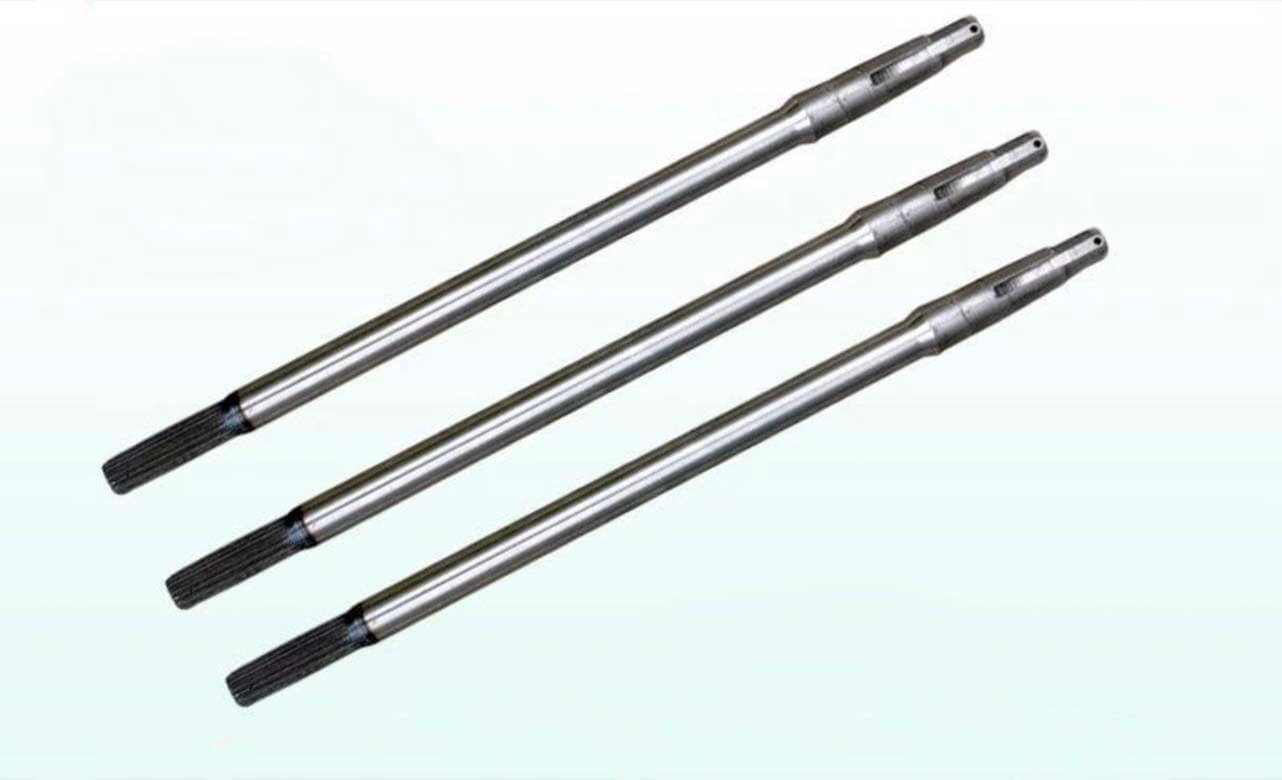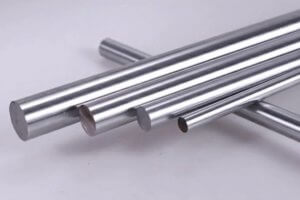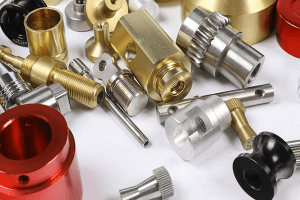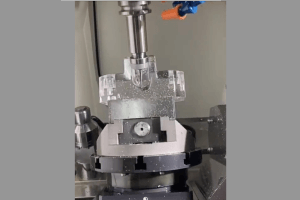Introduction to the CV Shaft
A CV Shaft (Constant Velocity Shaft) is a critical component in the drivetrain of many vehicles, especially in front-wheel drive (FWD) and all-wheel drive (AWD) systems. Its primary function is to transfer power from the engine to the wheels while allowing for the movement of the suspension. Unlike traditional solid shafts, the CV shaft is designed to maintain a consistent speed as it transmits torque, even when the vehicle is turning or navigating uneven surfaces. This unique feature allows for smooth operation and efficient power delivery, making the CV shaft essential in modern automotive engineering.
In my years of working in the automotive and CNC machining industries, I’ve seen firsthand how essential these shafts are to vehicle performance. When a CV shaft fails, it can lead to issues such as loss of power to the wheels, strange noises, and in some cases, complete failure of the vehicle’s drivetrain. Ensuring that a CV shaft is manufactured with high precision and quality is crucial, which is where CNC machining plays a pivotal role.
Understanding the Role of the CV Shaft in Vehicles
The CV shaft is more than just a mechanical part; it’s a key component that ensures the smooth operation of a vehicle. In front-wheel-drive and all-wheel-drive cars, the CV shaft connects the engine’s output to the wheels. It compensates for the vertical movement of the suspension and the horizontal movement during turns, all while maintaining a constant rotational speed.
The main benefit of a CV shaft is its ability to transmit power without losing torque, even when the axle is at an angle. This is especially important for vehicles that are constantly navigating turns or rough terrains. The typical CV shaft assembly includes parts like the inner joint, outer joint, and the shaft itself, all of which must work together seamlessly.
When designing a CV shaft, engineers must take into account factors such as load capacity, angle flexibility, and the material used. For example, high-performance vehicles may require CV shafts made from stronger, lighter materials like high-carbon steel or aluminum to withstand the stress of high speeds and cornering forces. This is where advanced machining methods, particularly CNC machining, come into play.
CNC Machining: Precision in Manufacturing CV Shafts
CNC machining has revolutionized the way complex automotive components, like the CV shaft, are manufactured. CNC (Computer Numerical Control) machining uses computerized controls to guide tools that shape and cut materials with exceptional precision. This method is especially beneficial for producing parts like the CV shaft, which require extremely tight tolerances to ensure proper fit and functionality.
Using CNC technology, manufacturers can produce CV shafts with a level of precision that was once unattainable with traditional machining methods. The benefits of CNC machining include:
- Higher precision: CNC machining allows for the precise shaping of parts to exact specifications, ensuring that the CV shaft will fit and function as intended.
- Repeatability: Once a CNC program is set, it can be used to produce identical CV shafts in large quantities without variation in quality.
- Complex geometry: CNC machining can easily handle the intricate designs and shapes required for CV shafts, such as the grooved inner and outer joints.
- Efficiency: CNC machines can operate continuously, reducing production time and labor costs.
In my experience, CNC machining ensures that every CV shaft produced meets the stringent quality standards required for modern vehicles. Whether for mass production or custom-designed CV shafts, CNC technology offers a level of consistency that is vital for automotive safety and performance.
Materials Used in CV Shaft Manufacturing
The choice of material plays a critical role in the performance and longevity of a CV shaft. CV shafts must withstand considerable forces, including torque, shear stress, and bending, all while maintaining flexibility. Materials commonly used for CV shafts include:
- High-carbon steel: Known for its strength and durability, high-carbon steel is often used in CV shafts for heavy-duty applications.
- Chromium steel: This material is commonly used in high-performance applications due to its ability to resist wear and high temperatures.
- Aluminum alloys: In performance vehicles, aluminum is used for CV shafts to reduce weight without sacrificing strength.
Each material comes with its own set of advantages, and the choice of material depends on the specific needs of the vehicle. CNC machining allows manufacturers to work with these materials efficiently, ensuring that the final product is both strong and precisely manufactured.
Challenges in CV Shaft Manufacturing
Manufacturing a CV shaft is not without its challenges. One of the primary difficulties is achieving the necessary balance between strength and flexibility. Since the CV shaft needs to be both rigid enough to transmit power and flexible enough to accommodate suspension movement, it must be designed with precise geometries.
In addition, because CV shafts are often used in demanding conditions, they must be resistant to wear and corrosion. Ensuring that the joints move smoothly while under pressure is critical for maintaining the overall performance of the drivetrain. Achieving this with precision machining is no small feat, but CNC machining provides the tools necessary to meet these demands.
Another challenge is the complex geometry of the joints and shaft. The inner and outer CV joints must fit together perfectly to function smoothly. With traditional machining methods, it would be nearly impossible to achieve the level of precision required. However, with CNC machining, the complex shapes of the CV shaft components can be manufactured with ease, allowing for a precise and functional fit.
Why CNC Machining is Ideal for CV Shaft Production
CNC machining is ideal for producing CV shafts because it offers unparalleled precision, speed, and repeatability. The ability to manufacture intricate parts with complex geometries and tight tolerances makes CNC machining the preferred choice for manufacturers in the automotive industry. Some specific advantages include:
- Reduced human error: CNC machines follow predefined programs, minimizing the chances of errors that can occur with manual machining.
- Faster production cycles: CNC machines can operate continuously, significantly speeding up production times and increasing output.
- Customizability: CNC machines can easily be programmed to produce custom-designed CV shafts for specific applications, whether for high-performance vehicles or specialized machinery.
In summary, CNC machining enhances the production of CV shafts by providing the precision and consistency required for high-quality components. It allows manufacturers to meet the high standards of the automotive industry while reducing production costs and time.
Applications of CV Shafts
The versatility of the CV shaft extends beyond passenger vehicles. CV shafts are used in various applications, including:
- Heavy machinery: In construction and mining equipment, CV shafts are used to transmit power to different parts of the machine.
- Aerospace: Some aircraft systems, such as helicopters, use CV shafts in their power transmission systems.
- Electric vehicles (EVs): With the rise of electric vehicles, CV shafts are increasingly being used in electric drivetrains, where precision and durability are paramount.
Each of these applications demands unique specifications and custom solutions, making CNC machining even more valuable in producing specialized CV shafts that meet these diverse requirements.
Conclusion
The CV shaft is an integral part of modern automotive and machinery systems, playing a crucial role in transferring power while maintaining smooth and efficient operation. CNC machining has revolutionized the manufacturing process of these shafts, providing the precision and consistency needed to produce high-quality components. Whether for standard vehicles or custom applications, CNC machining ensures that every CV shaft meets the strict standards for durability, performance, and safety. By understanding the importance of the CV shaft and the role of CNC technology in its production, manufacturers can continue to push the boundaries of automotive and machinery engineering.
FAQ
- What is a CV Shaft?
A CV (Constant Velocity) shaft is a component that transmits torque from the engine to the wheels in vehicles. It is designed to maintain a consistent rotational speed while accommodating the movement of the suspension and turning of the wheels. - How does a CV Shaft work?
The CV shaft works by connecting the engine’s output to the wheels while allowing for suspension movement and wheel turns. It keeps a constant velocity by compensating for the angle changes during turns. - What are the different types of CV Shafts?
There are primarily two types of CV shafts: inner CV shafts (closer to the differential) and outer CV shafts (closer to the wheel). These can also be classified based on the joints, such as ball-type and tripod-type CV joints. - Why is CNC machining important for manufacturing CV Shafts?
CNC machining is essential for creating high-precision parts like CV shafts, ensuring tight tolerances and consistent quality. CNC technology can efficiently create complex designs with minimal variation between parts. - What is the role of CNC machining in CV Shaft production?
CNC machining allows for the accurate fabrication of the CV shaft’s internal and external components, including grooves, splines, and precision joints. It ensures high durability and performance of the final product. - What materials are used to make CV Shafts?
CV shafts are typically made from durable materials such as chromoly steel, alloy steel, or carbon steel, which offer strength and resistance to wear. These materials also provide the flexibility needed for suspension movement. - How do you maintain a CV Shaft?
Regular inspection and lubrication of the CV shaft and its joints are essential for longevity. In cases of wear or damage, replacing the CV joints or the entire shaft might be necessary. - What causes a CV Shaft to fail?
CV shaft failure can occur due to excessive wear, lack of lubrication, poor material quality, or damage from impacts. Symptoms of failure include strange noises, vibrations, or loss of power to the wheels. - How can CNC machining improve CV Shaft production?
CNC machining ensures precise manufacturing of CV shafts, reducing human error and increasing production efficiency. It also enables the creation of custom or specialized CV shafts with tight tolerances. - What industries use CV Shafts?
CV shafts are primarily used in the automotive industry, especially in front-wheel and all-wheel-drive vehicles. They are also found in some industrial and heavy machinery applications where power needs to be transmitted with precise control.
Other Articles You Might Enjoy
- What is a Steering Shaft and How Does CNC Technology Improve Its Manufacturing
Introduction: The Backbone of a Vehicle’s Steering System When I first entered the manufacturing world, I was fascinated by the complexity of even the most straightforward vehicle components. One such…
- Precision CNC Machining of Steel: High-Volume Production
Precision CNC Machining and High-Volume Production As an integral part of modern manufacturing processes, Precision Computer Numerical Control (CNC) machining brings about unmatched accuracy and consistency in the production of…
- Custom CNC Machining: Tailoring Solutions to Unique Engineering Challenges?
Introduction to Custom CNC Machining In the manufacturing world, innovations continually emerge and challenge traditional production methodologies. A significant game-changer has been Computer Numerical Control (CNC) machining — a process…
- Material Versatility in CNC Machining: From Titanium to Thermoplastics
Introduction to CNC Machining CNC machining stands as a cornerstone in the manufacturing sector, enabling the precise creation of parts and components. This process utilizes computer numerical control (CNC) to…
- Precision CNC Machining for High-Performance Industrial Machinery
Precision CNC Machining for High-Performance Industrial Machinery The process of Precision CNC (Computer Numerical Control) machining is at the core of manufacturing high-performance industrial machinery. This technique leverages a computer's…
- Enhancing Efficiency in CNC Machining Parts Production with Cutting-Edge Machining Centers
Machining centers are game-changers in the world of CNC machining. Imagine a workshop where a single machine can perform multiple operations—turning, milling, drilling, and more—without moving the workpiece from one…









